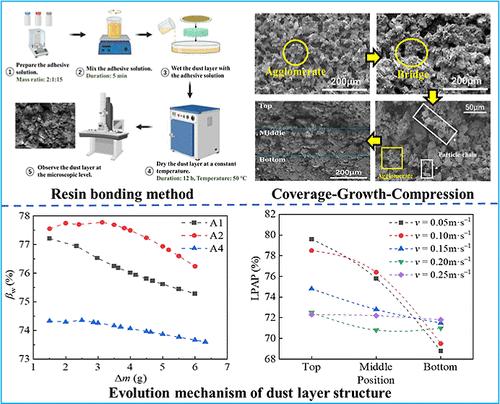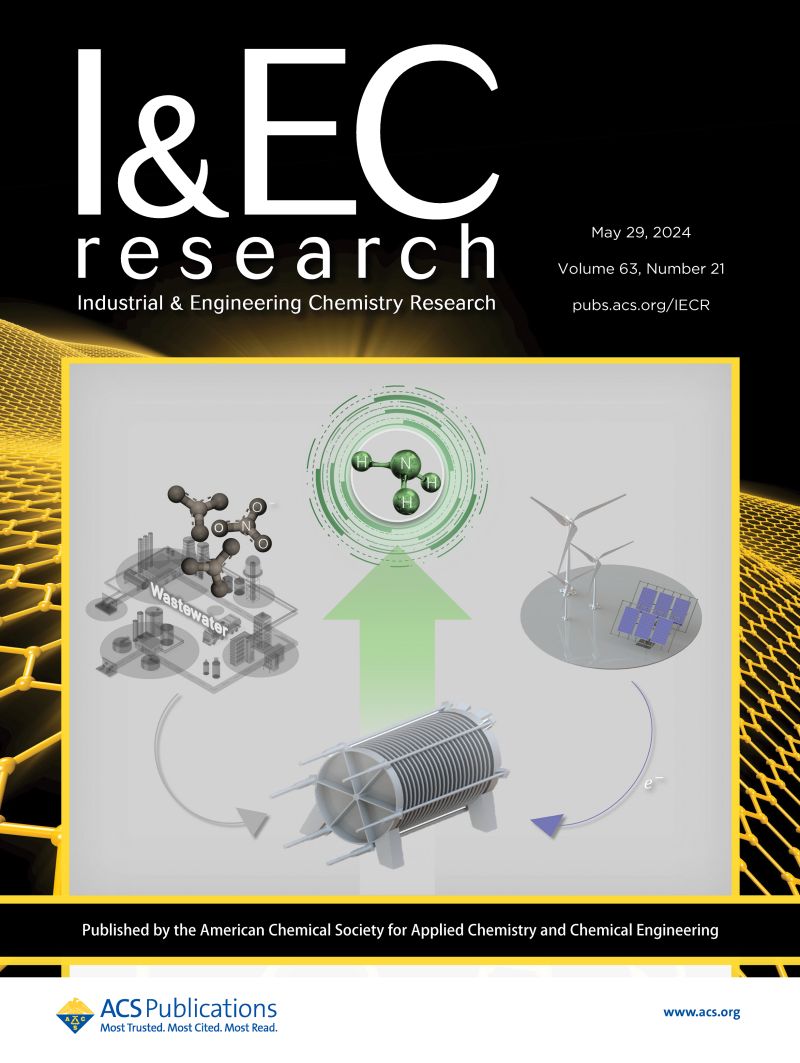Experimental Study on Dynamic Evolution Characteristics of Dust Layer Structure Based on Curing Method
IF 3.8
3区 工程技术
Q2 ENGINEERING, CHEMICAL
引用次数: 0
Abstract
The fiber filter in the engine intake system of a vehicle acts as a crucial barrier that shields the engine from damage caused by dust particles. While there has been extensive research on the filtration efficiency, dust-holding capacity and dust layer structure of this type of filter, limited research has been conducted on the dynamic evolution of dust layer particles on the surface of fiber materials (“coverage-growth-compression”) and its mechanism. In this study, a resin bonding method for low-strength fiber filter materials was proposed to cure the dust layer, and the particle deposition state in the dust layer was revealed by scanning electron microscopy. Particle aggregation and deposition theories were used to analyze the dynamic deposition process of dust layer particles at a microscopic level. The results revealed that during the coverage stage, large particles were directly deposited on the free surface following the airflow, while small particles aggregated on the surface of the filter material or large particles to form agglomerates, with bridging between the agglomerates. In the growth stage, the deposition pattern of large particles remained consistent, whereas small particles formed aggregates and particle chains within the pores of the dust layer. As particle deposition increased, the dust layer was compressed, leading to decreased porosity and nonuniformity in its structure along the thickness direction. The primary causes of dust layer compression were identified as relative particle movement, deformation and the collapse of aggregates and chains. Additionally, this study incorporated features of dust found in actual vehicle operating environments, employing 3D contour scanning technology and machine learning-based microscopic image analysis to investigate the influence of dust particle size distribution and apparent filtration gas velocity on dust layer structure. Experimental results revealed that layers containing smaller particles of equivalent mass exhibited an increased pressure drop and greater compression. Additionally, higher gas velocity during filtration decreased the porosity of the dust layer and led to a more uniform structure along the thickness direction. This study offers theoretical support and data for the optimization and development of fiber filtration media.

求助全文
约1分钟内获得全文
求助全文
来源期刊

Industrial & Engineering Chemistry Research
工程技术-工程:化工
CiteScore
7.40
自引率
7.10%
发文量
1467
审稿时长
2.8 months
期刊介绍:
ndustrial & Engineering Chemistry, with variations in title and format, has been published since 1909 by the American Chemical Society. Industrial & Engineering Chemistry Research is a weekly publication that reports industrial and academic research in the broad fields of applied chemistry and chemical engineering with special focus on fundamentals, processes, and products.
 求助内容:
求助内容: 应助结果提醒方式:
应助结果提醒方式:


